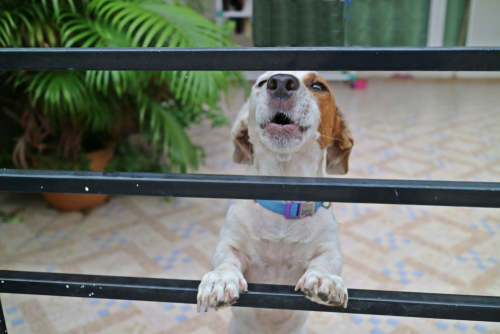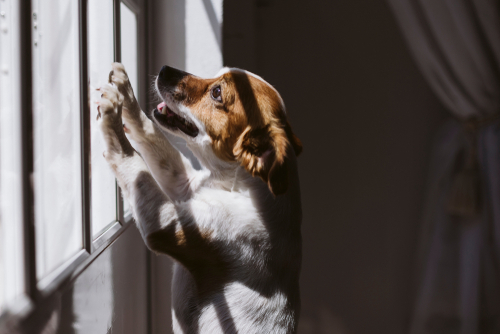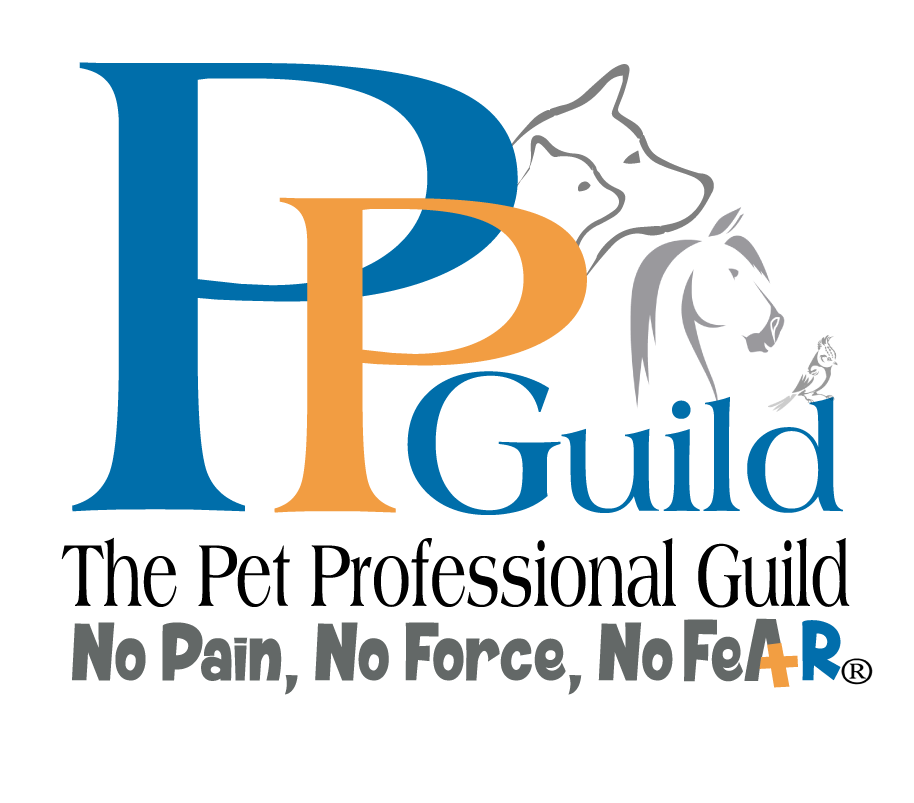If you’re a new puppy owner, you may be wondering if it’s okay to let your puppy cry it out. You’ve probably heard conflicting information. You’re not alone Almost all of my puppy parents have heard “your puppy needs to learn, don’t worry, they will get used to it” or “you can’t give into your puppy, let him cry it out”, and other similar advice. This information comes from old-fashioned training methods. We have learned so much over the years about how dogs learn and we now know this way of thinking can cause behavior fallout in the form of stress, anxiety, a puppy not wanting to go into the crate or puppy playpen, being afraid to be left in a gated room, and even full blown separation anxiety.
Being alone isn’t natural for your puppy. We have bred dogs to be companion animals. They are far removed from wolves who are wary of people. Your puppy was with his mom, littermates, and a temporary family. Your puppy was then plucked away from everyone and everything they knew was familiar and safe. Now, they are alone, with a new family. There is no mom and siblings to huddle in a pile and sleep with. No wonder our puppies whine, cry, and are stressed when we try to leave them alone. I would be surprised if a puppy didn’t show some form anxiety when we leave them by themselves.
Teaching your puppy to be alone can seem daunting at first. When done correctly, it will help your puppy feel safe and secure in their own space, which is going to come in handy when you need to leave him home alone. However, there are a few things you should keep in mind to make sure the process goes smoothly.
 Let’s go over some of the do’s and don’ts of training your puppy to be alone.
Let’s go over some of the do’s and don’ts of training your puppy to be alone.
DO let your puppy get used to their crate or safe space gradually. When first introducing your puppy to their crate, put it in a room where he already spends a lot of time (e.g. the living room). Then, let him explore it on his own terms. Once they seem comfortable with it, you can start feeding them meals inside the crate. After a week or so of this, you can begin closing the door for short periods of time while they’re inside (e.g. while you go to the bathroom or make a quick phone call). Slowly increase the amount of time you leave him in the crate until he is able to stay in there for up to an hour without getting anxious.
DON’T force your puppy into the crate. If he is resistant to going inside, don’t push him. This will only make him more anxious and will make the process take longer in the long run. Instead, try putting some of their favorite toys or treats inside the crate so they associate it with good things.
My top 3 long-lasting goodies to help my puppies associate good things with being alone:
- Stuffed, frozen KONG
- Marrow bone
- Bully stick
I often leave my puppies with a stuffed/frozen KONG or marrow bone AND a bully stick. I do this so my puppy has a choice in what they would like to engage with. The stuffed KONG and marrow bone are things my puppy can get gratification out of right away. A bully stick takes a lot longer to soften the end to tear a small piece off, but the bully stick provides a nice option for chewing. When my puppy finishes a KONG or has worked hard on the marrow bone, they will often take a nap, but they also have the option to satisfy their need to chew if they aren’t quite ready to fall asleep yet. By the time they are done with their alone time training, they have enjoyed some delicious goodies and have associated being alone with great stuff. My puppies start looking forward to alone time because it means great stuff happens.
 DO use positive reinforcement when training your puppy. If he does something you want (e.g. go into his crate on their own or when you cue him to), be sure to praise him and give him a small handful of high value treats scattered in his crate or safe space so he knows he doing something right.
DO use positive reinforcement when training your puppy. If he does something you want (e.g. go into his crate on their own or when you cue him to), be sure to praise him and give him a small handful of high value treats scattered in his crate or safe space so he knows he doing something right.
DON’T leave your puppy in their crate for too long or let them cry it out. Set up a camera so you can watch your puppy and let them out before they become uncomfortable or distressed in any way.
Alone time training is very important—but be sure to do it correctly! By following the tips above, you’ll set yourself (and your puppy) up for success from the very beginning!
Remember- your puppy has literally never been alone up until this point.
Is your puppy’s anxiety with being alone or their crate causing you anxiety? We teach you step by step how to crate train your puppy and how to prepare them to be alone in our signature Puppy Concierge program. Want help? Yes, please! I’m stressed because my puppy is stressed.












